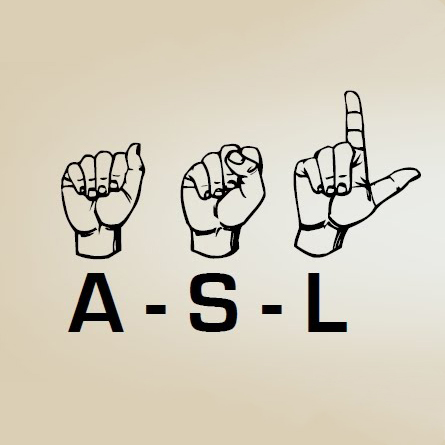
Learning ASL and How Deaf Children Are Being Left Out
When we think of languages we often think of different words that we can say. Often times it is fun to learn the many different ways that people have created words for the same object. What is also often is that sign language is not thought of in world language spaces.
American Sign Language is a beautiful language that is signed by around 500,000 people in the US- mostly by deaf people, but their hearing family, friends, and teachers as well. Accredited online American sign language classes like the ones we provide at LanguageBird also enhance students’ overall learning and communication skills.
Reporter Carly Stern writes about how deaf children often don’t socialize with their peers in public schools because of the lack of ASL courses. Read her article here:
—
When he was in elementary school, one of the most isolating parts of Chris Soukup’s school day was when announcements crackled over the school intercom. Soukup couldn’t hear them. He also couldn’t hear the rustling of papers or the shrieking of students before lunchtime. It was lonely being the only deaf student at Christ the King Elementary in Sioux Falls, South Dakota, in the 1980s.
Soukup, now CEO of the social impact organization Communication Service for the Deaf, had an unusual education: He attended a mainstream school with hearing students but signed and spoke at home. His father was also deaf, and his mother taught classes to people who aspired to teach deaf students. She wanted to provide Soukup with access to every kind of education, so American Sign Language (ASL) was his first language. While it may seem like this should be the norm, research suggests that Soukup’s early familiarity with ASL was far from typical. In fact, it’s estimated that 80 percent of the roughly 32 million deaf children around the world lack access to education altogether, according to the World Federation of the Deaf. But even among those who do have educational opportunities:
ONLY 2 PERCENT OF DEAF CHILDREN RECEIVE THEIR EDUCATION IN SIGN LANGUAGE, ACCORDING TO THE GLOBAL PARTNERSHIP FOR EDUCATION.
Some countries don’t have a standard sign language — there is no universal version — so deaf children in those places lack a structured communication system from the outset. Many countries don’t have an equivalent law to the Americans With Disabilities Act (ADA), which mandates that specific support services are provided to deaf or hard of hearing children in the U.S. And technology may also be a threat to the spread of sign language. Cochlear implants, surgically implanted neuroprosthetic devices that allow deaf or hard of hearing people to hear sound, were fitted on 40 percent of U.S. deaf children as of 2014, according to the National Institute of Deafness. That’s a 25 percent increase from 2009. Soukup says parents often face a misconception: Choose to sign or speak, not both; otherwise, the child might never acquire a dominant language.
But research suggests that interpreting sign language activates the brain and supports development, Soukup says. Some even recommend teaching sign language to all children, hearing or not, before age two because babies exposed to sign language typically acquire signs at an earlier age than they acquire spoken words, according to a 2007 paper in the Journal of Applied Behavior Analysis.
Though it might seem counterintuitive, progressive nations with free health care and advanced technologies tend to have lower rates of education in sign language, according to Peter Hauser, a clinical neuropsychologist at the National Technical Institute for the Deaf (NTID) and Rochester Institute of Technology (RIT). Ninety-eight percent of Danish children who are deaf receive cochlear implants (about 2 percent can’t receive them for medical reasons), and Denmark no longer offers sign language instruction to any children at all, Hauser says.
One problem with this approach? Deaf children with cochlear implants still can’t hear as well as hearing individuals, Hauser says. On average, deaf children with cochlear implants demonstrated lower receptive and expressive vocabulary knowledge than children with full hearing, according to a 2016 meta-analysis published in the Journal of Deaf Studies and Deaf Education. While some develop strong hearing skills and grow comfortable with spoken language, others don’t. By the time this is discovered, children may have been deprived of language in the critical acquisition period, or the first few years of life.

Differing state laws also make it challenging to identify parents with deaf children and inform them about available resources. Though the U.S. requires children’s hearing to be tested at birth, the results are kept in medical records, and schools often don’t get involved until the child is school-age, Hauser says. In Hawaii, for example, the Department of Education funding kicks in at kindergarten, when students are 5 … after the critical period for language acquisition has passed.
Without the ability to write, speak or sign, children can wind up in a type of purgatory, Soukup says. This disadvantage compounds over time as children may fall behind on acquiring new skills and advancing through grade levels, with potentially lasting effects on life outcomes. Seventy percent of deaf people are underemployed or unemployed, according to the Communication Service for the Deaf. Deaf individuals also experience higher rates of domestic and sexual victimization than hearing individuals, according to the Vera Institute for Justice. Even so, much remains unknown about the true rates of assault, disclosure trends, or coping mechanisms of deaf individuals, who face unique barriers to coming forward, according to research from Gallaudet University.
Access to a visual language also reduces the need for deaf or hard of hearing people to rely on technology that could fail. The battery of a cochlear implant could die, for example, leaving a child in an emergency situation without the ability to hear. And while some people with cochlear implants report having positive experiences, Soukup says many reviews are mixed — not only because of the technology itself but due to self-esteem challenges, too.
“You have this entire generation of kids who grow up feeling like they’re broken,” Soukup says. “So much of the world and the energy as it pertains to deaf people … is, ‘Let’s find the cure.’ ” The logic? If doctors can do a surgery to correct someone’s hearing or “normalize” them, parents won’t face the “burden” of supporting them outside the mainstream. Instead, Soukup — who notably identifies as “Deaf” with a capital D — advocates for putting “all the tools in the toolbox.” This involves using technology as it advances while allowing the deaf or hard of hearing children to make their own choices.
The glimmer on the horizon is that breakthroughs will continue to improve education access for deaf children, and awareness is a necessary first step. Automatic speech recognition devices, or technology that identifies and processes human voice, could grow more popular in classrooms, Hauser says. California, Kansas and Hawaii, among other states, have passed some form of Language Equality and Acquisition for Deaf Kids (LEAD-K) legislation, which monitors early language programs to promote kindergarten readiness.
But it’s also about the intangibles, like finding a place in society for the deaf community to celebrate their identities and tell their stories. September 2018 marked the United Nations’ first-ever International Day of Sign Languages, including everything from Zambian Sign Language to Papa New Guinean Sign Language. It may be symbolic, but in a hearing world, a celebration of deaf languages is one more step to remind deaf children they’re not alone.
–
Post credit: Carly Stern
https://www.ozy.com
Ozy News site




